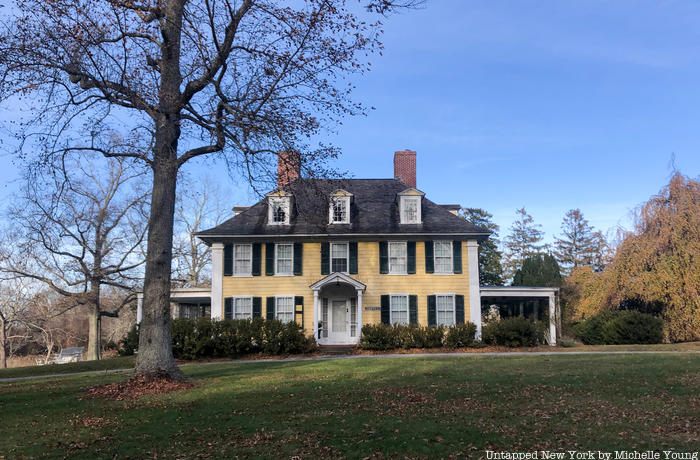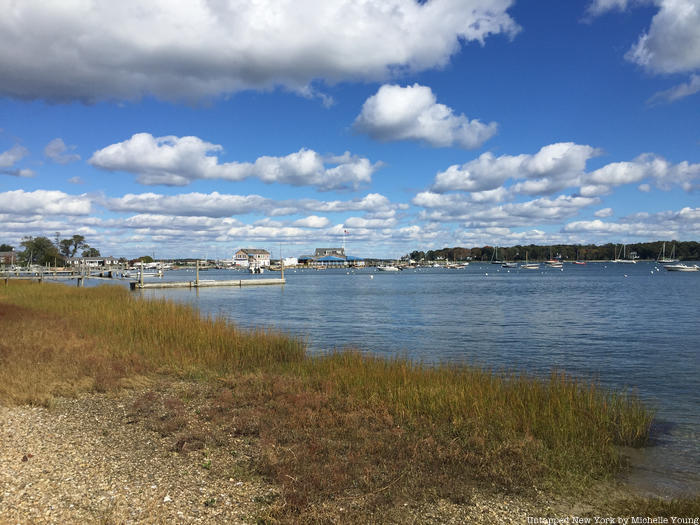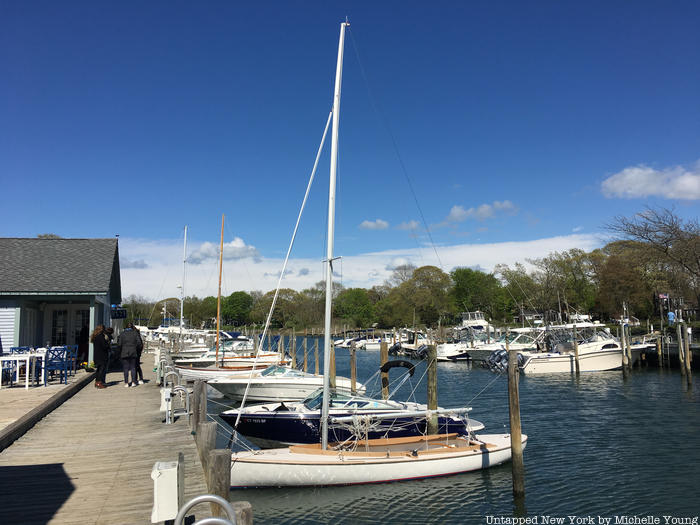8. Shelter Island

Shelter Island is a town all the way out east on Long Island, accessible via ferry from Greenport or North Haven. The island is made up of the village of Dering Harbor and a number of unincorporated neighborhoods. Shelter Island was originally inhabited by the Manhasset tribe, who named the island Manhansack-aha-quash-awamock, or “Island sheltered by islands.” Shelter Island was originally included in the Plymouth Colony land grant by James I, and by 1651 after changing ownership a few times, the island came under control of Barbados sugar merchants, including Nathaniel Sylvester. The Sylvester estate became a large provisioning plantation, and slaves were used on the plantation until the 19th century; it is estimated that 200 blacks are buried at the Negro Burying Ground near the estate.

Shelter Island resident Jonathan Nicolls Havens was a member of the First Continental Congress, and the British shipped hay from the island during the American Revolution. Under architect Robert Morris Copeland, many classic American style homes were constructed, and around 70 summer cottages were built in Shelter Island Heights. Figures like the “Borax King” Francis Marion Smith and advertising mogul Artemas Ward settled on Shelter Island bought residences on the island, yet the island suffered during the Great Depression as many people moved away. The area has since grown into a community of around 2,300 residents with a handful of shops and restaurants scattered throughout.

Shelter Island is home to 10 structures and areas on the NRHP list, including Camp Quinipet, a Methodist camp founded in 1922, and the Shelter Island Windmill. The site of the Sylvester plantation, Sylvester Manor, is now used as an education farm, while the Smith–Ransome Japanese Bridge was designed for Smith’s estate. Other notable buildings include the James Havens Homestead, the Shelter Island Country Club, and Manhanset Chapel. The entire Shelter Island Heights Historic District is also listed, including buildings like the Chequit Hotel and the Shelter Island Heights Pharmacy. Although the island is filled with nature, many of the island’s beaches are private, so parks like Fiske Field and the Mashomack Preserve are more accommodating to visitors. Other notable points for sightseeing include Ram Island and Dering Harbor.
The island is only home to a handful of eateries, many along North Ferry Lane, but each craft their menus around local ingredients from the island and Eastern Long Island. Perhaps most notable is 18 Bay, an Italian eatery know for creative dishes like pappardelle with rabbit ragout and striped bass with Sylvester Manor farm fennel. Another nearby upscale eatery, Vine Street Cafe, offers a selection of carefully constructed dishes like crispy duck confit and fluke almondine. More casual eateries on the island include Maria’s Kitchen, which serves affordable Mexican fare, brunch eatery Kyle’s, SALT Waterfront Bar & Grill, and French eatery Marie Eiffel Market. Seafood is can also be found at Commander Cody’s Seafood shack and The Islander, Shelter Island’s diner.





